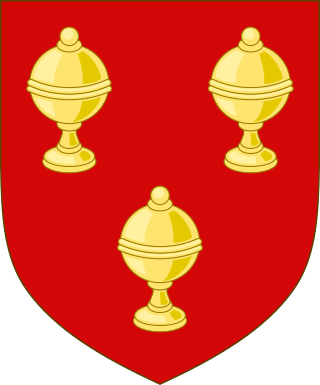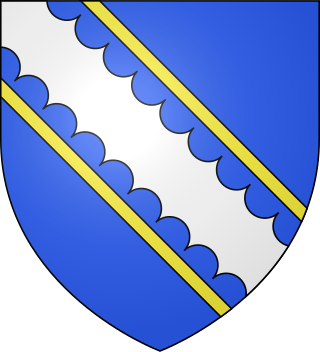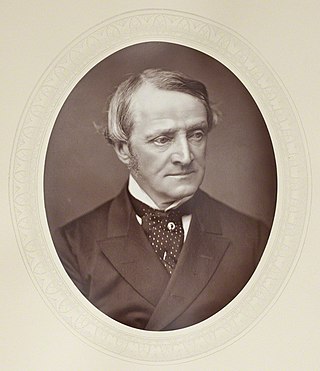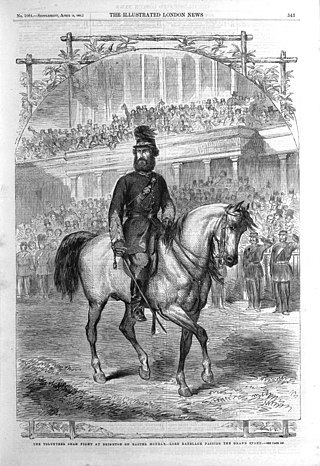Related Research Articles

The peerage title Earl of Ormond and the related titles Duke of Ormonde and Marquess of Ormonde have a long and complex history. An earldom of Ormond has been created three times in the Peerage of Ireland.

The title Viscount Taaffe, of Corren, was created in the Peerage of Ireland in 1628, together with the subsidiary title Baron Ballymote. From 1661 to 1738, the Viscounts Taaffe were also the Earls of Carlingford.
Feldmarschall Nicholas Taaffe, Graf von Taaffe, 6th Viscount Taaffe and 6th Baron of Ballymote, was an Irish-born courtier and soldier who served the Habsburgs in Lorraine and Austria.
Viscount O'Neill, of Shane's Castle in the County of Antrim, was a title in the Peerage of Ireland. It was created in 1795 for John O'Neill, 1st Baron O'Neill, who had earlier represented Randalstown and County Antrim in the Irish House of Commons. He had already been created Baron O'Neill, of Shane's Castle in the County of Antrim, in 1793, also in the Peerage of Ireland. He died in 1798 and was succeeded by his son, the second Viscount. In 1800 he was created Viscount Raymond and Earl O'Neill in the Peerage of Ireland. The same year he was elected as one of the original 28 Irish representative peer. The viscountcy of Raymond and earldom became extinct on his death in 1841. The barony and viscountcy of O'Neill were passed on to his only brother, the third Viscount. These titles became extinct on the latter's death in 1855. The late Viscount's estates were inherited by his cousin, the Reverend William Chichester, who assumed the surname of O'Neill in lieu of Chichester the same year. In 1868, the O'Neill title was revived when he was created Baron O'Neill. This title is still extant.

Viscount Clermont, of Clermont in the County of Louth, was a title in the Peerage of Ireland. It was created in 1776 for William Fortescue, 1st Baron Clermont, with special remainder in default of male issue of his own to his brother James Fortescue and the heirs male of his body.

Chichester Samuel Parkinson-Fortescue, 2nd Baron Clermont and 1st Baron Carlingford, known as Chichester Fortescue until 1863 and as Chichester Parkinson-Fortescue between 1863 and 1874 and Lord Carlingford after 1874, was a British Liberal politician of the 19th century.
The title Earl of Dover has been created twice, once in the Peerage of England and once in the Jacobite Peerage.
Taaffe can refer to:

Viscount Ranelagh was a title in the Peerage of Ireland. It was created on 25 August 1628 for Sir Roger Jones, son of Thomas Jones, Archbishop of Dublin and Lord Chancellor of Ireland. He was made Baron Jones of Navan, in the County of Meath, at the same time also in the Peerage of Ireland. Thomas Jones's father was Henry Jones, of Middleton in Lancashire. The first Viscount was succeeded by his eldest son, Arthur, the second Viscount, who represented Weobly in the English Parliament. Arthur was succeeded by his son, Richard, the third Viscount, who was created Earl of Ranelagh in the Peerage of Ireland in 1677. On Richard's death in 1712 the earldom became extinct while the barony and viscountcy became dormant.

Baron Clermont is a title that has been created three times, twice in the Peerage of Ireland and once in the Peerage of the United Kingdom. All three creations are extinct. The first creation, Baron Clermont, of Clermont in the County of Louth, came in the Peerage of Ireland on 26 May 1770 for William Fortescue, who was later made Viscount Clermont and Earl of Clermont. For more information on this creation see Viscount Clermont, a title which became extinct in 1829. The second creation came in the Peerage of Ireland on 11 February 1852 when Thomas Fortescue, formerly Member of Parliament for Louth, was made Baron Clermont, of Dromisken in the County of Louth, with special remainder failing heirs male of his own to his younger brother Chichester Fortescue and the heirs male of his body.
John Butler, Earl of Gowran (1643–1677) was an MP in the Irish Parliament 1661–1666 before being created Earl of Gowran in 1676. He married but died childless.

Thomas Dillon, 4th Viscount DillonPC (Ire) held his title for 42 years that saw Strafford's administration, the Irish Rebellion of 1641, the Irish Confederate Wars and the Cromwellian Conquest of Ireland. He was a royalist and supported Strafford and Ormond. He sided with the Confederates for a while but was a moderate who opposed Rinuccini, the papal nuncio.

Theobald Dillon, 1st Viscount Dillon, was an Irish military commander and adventurer. He held extensive lands in eastern Connacht and north-western Leinster, some acquired by sharp practices. He was a loyal supporter of Elizabeth I of England in her Irish wars.
Theobald Taaffe, 1st Earl of Carlingford, known as 2nd Viscount Taaffe, of Corren and 2nd Baron of Ballymote between 1642 and 1661, was an Irish Royalist officer who played a prominent part in the Wars of the Three Kingdoms. Following the outbreak of the Irish Rebellion of 1641, the Catholic Taaffe remained loyal to the authorities in Dublin. He later joined the Irish Confederates, and was awarded command of the Munster Army. Taaffe was a supporter of the moderate faction, and strongly supported an alliance between the Confederates and Irish Royalists. After the Cromwellian conquest of Ireland, Taaffe accompanied Charles II in exile. Following the Restoration, he was created 1st Earl of Carlingford.
Christopher Plunket, 2nd Earl of Fingall and 11th Baron Killeen was an Irish politician and soldier. In 1641 he negotiated with the rebels on behalf of the Old English of the Pale and pushed them to join the rebellion. He fought for the rebels at the siege of Drogheda. He joined the Confederates and fought in their Leinster army, notably at Dungan's Hill. When the Confederates fused into the Royalist Alliance, he fought under James Butler, 1st Duke of Ormond in the Battle of Rathmines where he was wounded and taken prisoner. He died of his wounds two weeks later in captivity at Dublin Castle.

Arthur Chichester, 1st Baron Chichester, of Carrickfergus in Ireland, was an English administrator and soldier who served as Lord Deputy of Ireland from 1605 to 1616. He was instrumental in the development and expansion of Belfast, now Northern Ireland's capital. Several streets are named in honour of himself and his nephew and heir Arthur Chichester, 1st Earl of Donegall, including Chichester Street and the adjoining Donegall Place, site of the Belfast City Hall.
Francis Taaffe, 3rd Earl of Carlingford, was 4th Viscount Taaffe, of Corren, and 4th Baron of Ballymote and an army commander and politician of Irish descent in the service of Emperor Ferdinand III in the Austrian capital Vienna and later of Duke Charles IV of Lorraine in Nancy.
The High Sheriff of Louth was the Crown's representative for County Louth, a territory known as his bailiwick. Selected from three nominated people, he held his office for the duration of a year. He had judicial, ceremonial and administrative functions and executed High Court Writs.
Events from the year 1677 in Ireland.
Luke Plunket, 3rd Earl of Fingall (1639–1684) was an Irish soldier and politician. He was one of the signatories of the Catholic Remonstrance of 1661.
References
- 1 2 3 4 5 One or more of the preceding sentences incorporates text from a publication now in the public domain : Headlam, James Wycliffe (1911). "Taaffe, Eduard Franz Joseph von, Count". In Chisholm, Hugh (ed.). Encyclopædia Britannica . Vol. 26 (11th ed.). Cambridge University Press. pp. 321–322. This further references:
- Würzbach, Biographisches Lexicon Österreichs. Memoirs of the Family of Taaffe (Vienna, 1856), privately printed
- Article in the Contemporary Review (1893), by EB Lanin.
- The Prague Politik published in December 1904 contains some interesting correspondence collected from Taaffe's papers.
- ↑ Chisholm, Hugh, ed. (1911). . Encyclopædia Britannica . Vol. 5 (11th ed.). Cambridge University Press. p. 339.